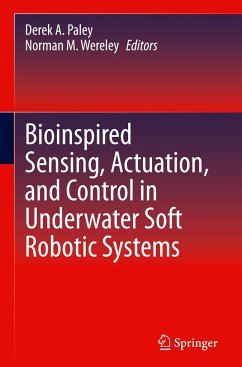
Robotic Systems and Autonomous Platforms
Advances in Materials and Manufacturing
Herausgegeben: Walsh, Shawn M.; Strano, Michael S.
Versandkostenfrei!
Versandfertig in 6-10 Tagen
235,99 €
inkl. MwSt.

PAYBACK Punkte
118 °P sammeln!
Robotic Systems and Autonomous Platforms: Advances in Materials and Manufacturing showcases new materials and manufacturing methodologies for the enhancement of robotic and autonomous systems. Initial chapters explore how autonomous systems can enable new uses for materials, including innovations on different length scales, from nano, to macro and large systems. The means by which autonomous systems can enable new uses for manufacturing are also addressed, highlighting innovations in 3D additive manufacturing, printing of materials, novel synthesis of multifunctional materials, and robotic coo...
Robotic Systems and Autonomous Platforms: Advances in Materials and Manufacturing showcases new materials and manufacturing methodologies for the enhancement of robotic and autonomous systems. Initial chapters explore how autonomous systems can enable new uses for materials, including innovations on different length scales, from nano, to macro and large systems. The means by which autonomous systems can enable new uses for manufacturing are also addressed, highlighting innovations in 3D additive manufacturing, printing of materials, novel synthesis of multifunctional materials, and robotic cooperation. Concluding themes deliver highly novel applications from the international academic, industrial and government sectors.
This book will provide readers with a complete review of the cutting-edge advances in materials and manufacturing methodologies that could enhance the capabilities of robotic and autonomous systems.
This book will provide readers with a complete review of the cutting-edge advances in materials and manufacturing methodologies that could enhance the capabilities of robotic and autonomous systems.












